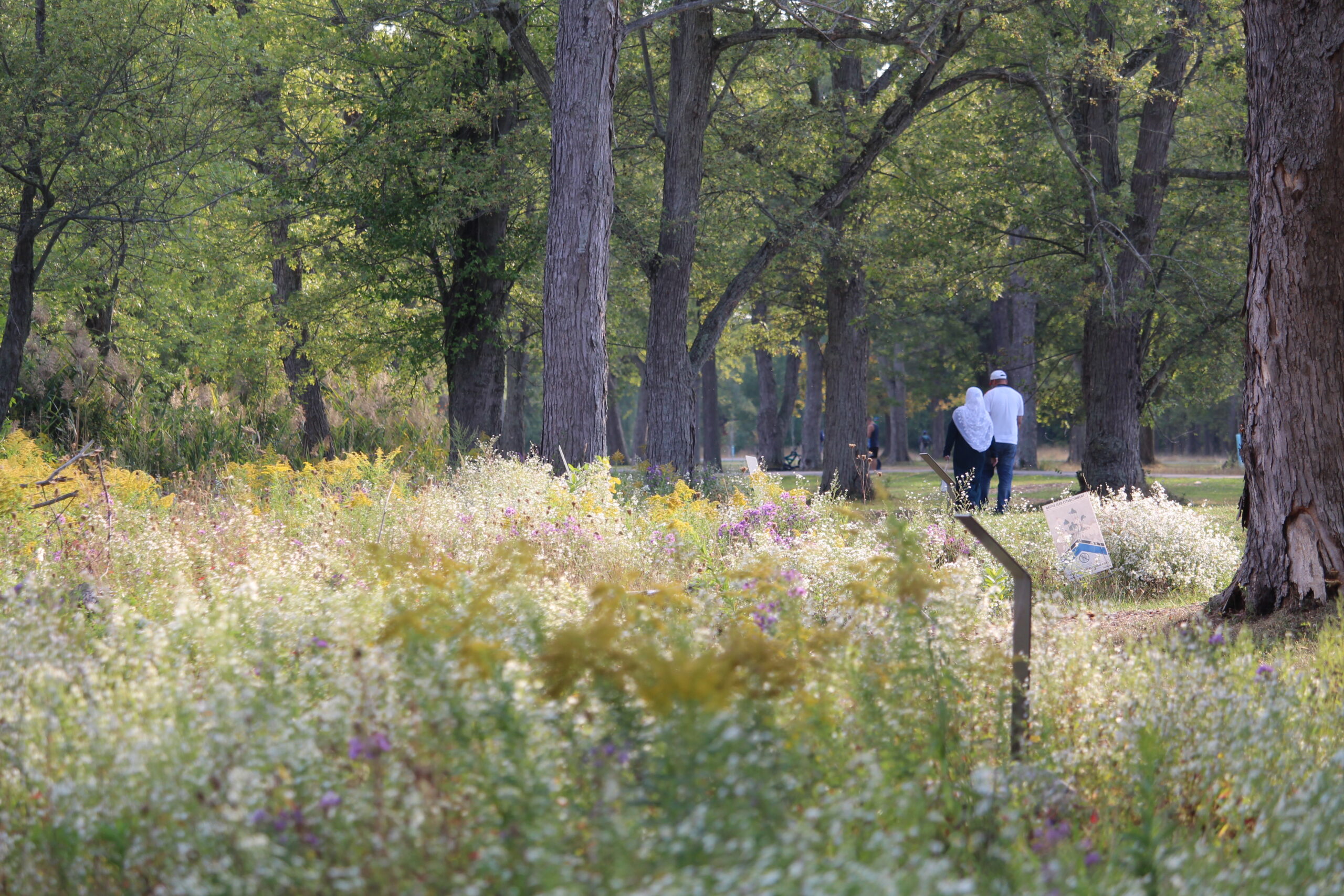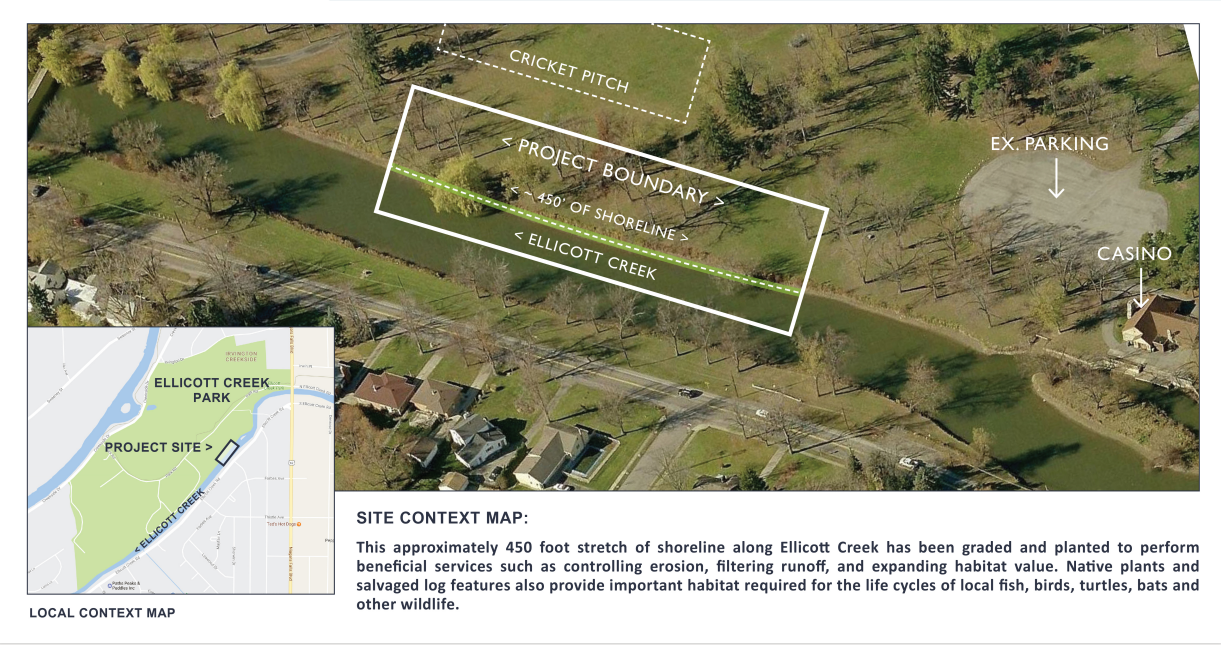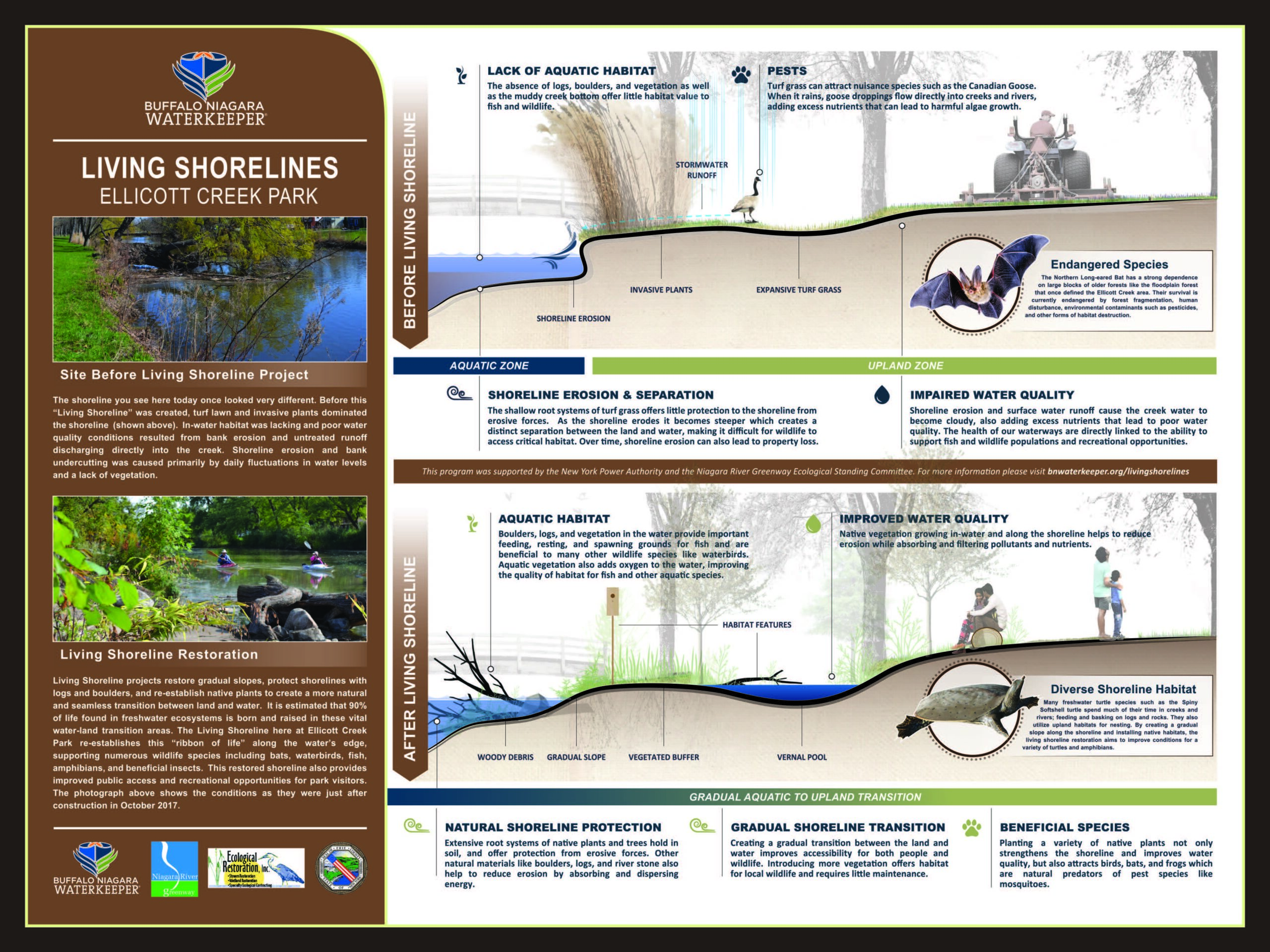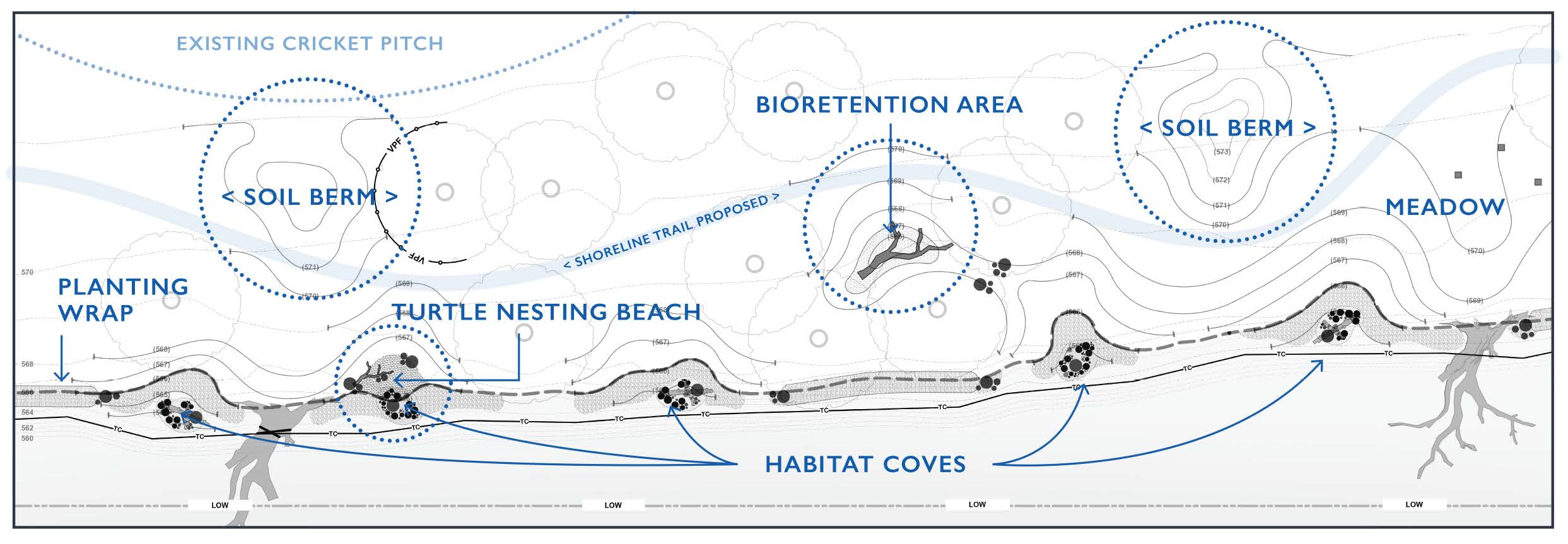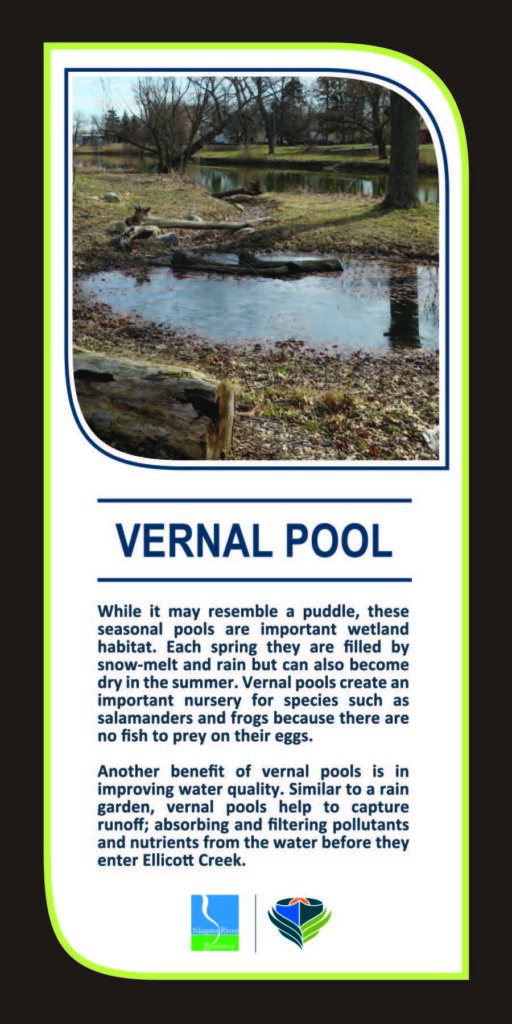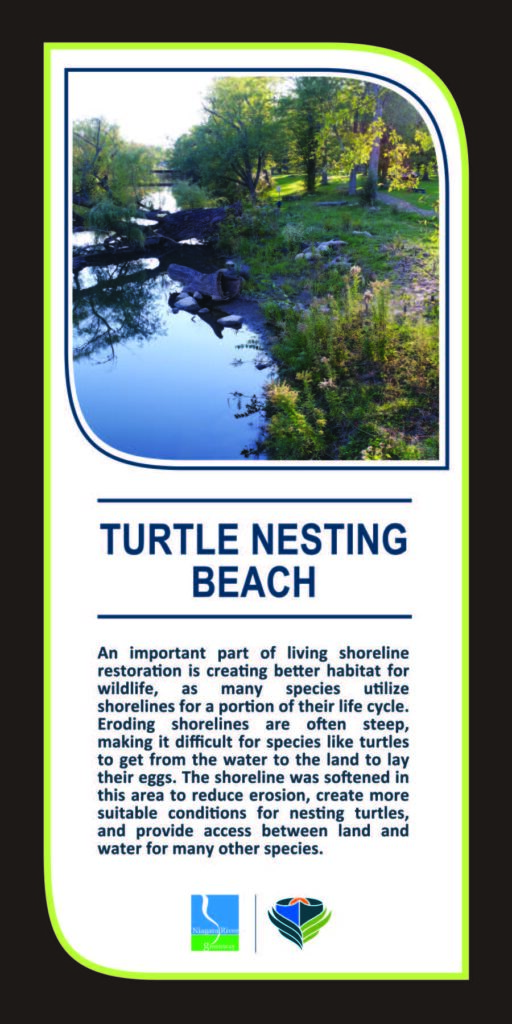Enhancing the land through a living shoreline to prevent erosion while also providing a habitat for wildlife and plants.
Restorative Efforts
The Living Shoreline Project at Ellicott Creek Park made improvements to 450-feet of shoreline at this Erie County park in Tonawanda. Through our work, we were able to re-establish native plants to create a more natural and seamless transition between land and water. This “ribbon of life” along the water’s edge will support numerous wildlife species including bats, waterbirds, fish, amphibians and beneficial insects.
It also allows for improved public access and recreation for park visitors.
Formerly, the land where the restoration took place was largely mowed turf grass with a steep slope between the land and water, and primarily invasive species colonizing the shoreline area.
Through our work, we were able to re-establish native plants to create a more natural and seamless transition between land and water. This “ribbon of life” along the water’s edge will support numerous wildlife species including bats, waterbirds, fish, amphibians and beneficial insects. This restoration also created new opportunities for park visitors to explore and experience a living shoreline ecosystem via trails, sitting areas, and education signage.”
The above diagram provides an overview of the various restoration areas. Aquatic coves create suitable conditions for aquatic plants, wading birds, and juvenile fish; meadow areas provide critical pollinator habitat and enhance the seasonality of the park; and the soil berms direct stormwater runoff into a bioretention area that functions as a vernal pool to reduce the amount of stormwater pollution entering Ellicott Creek while providing nursery habitat for baby turtles and amphibians.
Funding for the project was awarded in 2016 and final restoration work was completed at the end of 2017.
Restored Conditions
Boulders, logs, and vegetation in the water offer important feeding, resting and spawning grounds for fish.
Native vegetation growing in-water and along the shoreline reduce erosion while absorbing and filtering pollutants and nutrients.
Variety of native plants not only strengthens the shoreline, but also attracts birds, bats, and frogs, which are natural predators of pest species like mosquitoes.
The gradual transition between the land and water improves accessibility for both people and wildlife.




Reforestation
Since 2018-2022, Waterkeeper led a re-forestation effort in Ellicott Creek Park, and with the help of our dedicated volunteers, we planted hundreds of trees and shrubs.
Buffalo Niagara Waterkeeper secured grant funding from the U.S. Forest Service Great Lakes Restoration Initiative to plant and maintain 700 new trees throughout Ellicott Creek Park. This exciting, five-year volunteer planting effort was designed to introduce the next generation of park trees while also reducing stormwater runoff to Ellicott and Tonawanda Creeks. We were also able to add in hundreds of new shrubs as part of this effort.
Runoff reduction at this 165-acre site is critical as it sits entirely within an urban environment bordered by two tributaries to the Niagara River. With a large portion of the existing park tree stock destined to age-out in coming years, the park threatened to suffer a loss of mature trees and reduced stormwater collection potential of up to a million gallons.
Successful establishment of new trees will result in maintaining a park canopy and stabilizing the absorption capacity of the soil to help protect water quality. As partners in this effort, the landowner, Erie County Parks, supplied much needed mulch for events and is providing long-term maintenance to support successful establishment.
